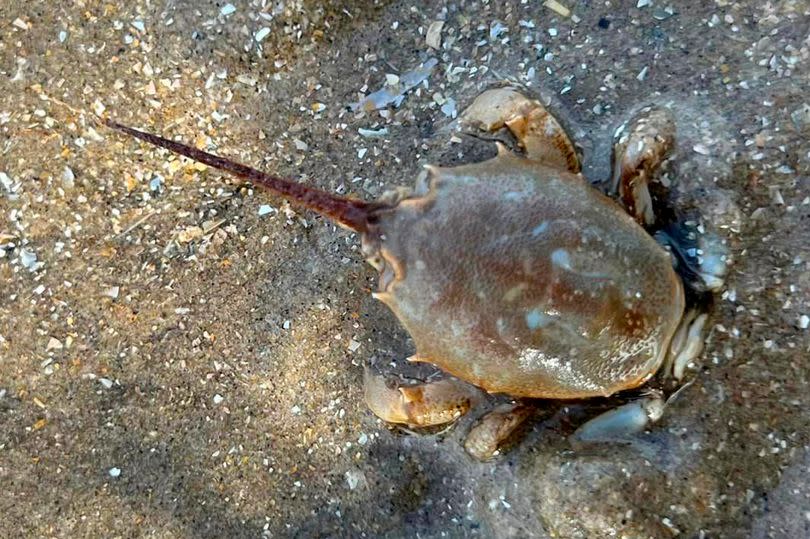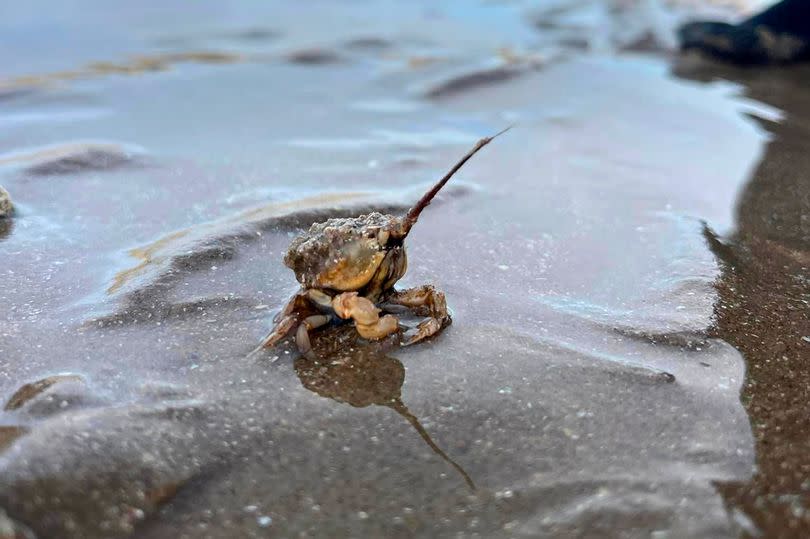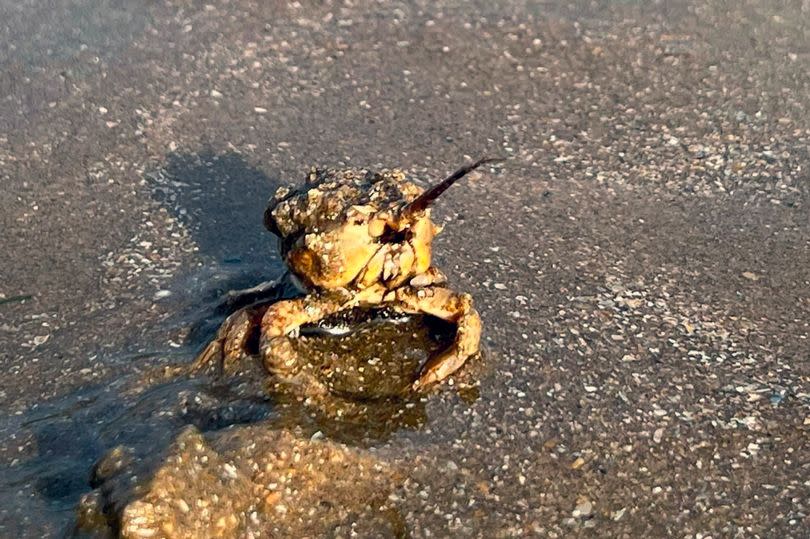Family find 'something moving in sand' on beach and it leaves them 'amazed'

A family enjoying a stroll along a Welsh beach were left astounded when they spotted "something moving in the sand". It was a large spike seemingly trying to burrow itself out of sight.
Angharad Owen and her family made the find during their visit to Traeth Benllech on Anglesey's western coast. The sandy beach, perfect for paddling and exploring rock pools, was where Angharad and her family encountered an unusual visitor halfway up the beach and quite a distance from the sea.
"My mum spotted it when she saw something moving in the sand," she said. "As it was small I was told it must be a female. We noticed it was trying to burrow into the sand. As I have a sea creature-mad son we showed it him and he was amazed.
READ MORE: The Welsh bakery named one of the best in Britain
"We took a few photos to find out what it was. Then we left it as it burrowed back into the sand again," she told NorthWalesLive.
Believing it to be some sort of crustacean Angharad, from Bangor, Gwynedd, sought answers on Facebook's Wildlife of Anglesey forum. The consensus was clear they had stumbled upon a masked crab.
These creatures are seldom seen as they spend most of their time hidden in the sand buried to survive the harsh conditions of low tide. Their fine-tipped "spikes" are actually pairs of antennae brought together to form breathing tubes.

These draw down oxygenated water into the sand. When the crabs part and wave their antennae it can be a slightly disconcerting sight. Even stranger are the patterns on their upper shells, or carapaces, which can resemble a human face.
They're quite small and their carapaces are typically 4cm in length. However the males have outsized claws that are much longer than their bodies giving them a slightly freakish appearance.
They are native to the British Isles and Anglesey is a good place to find them as the island's cool, clean waters support plenty of marine life. Red Wharf Bay is a UK hotspot for masked crabs though most of them have been found during underwater surveys.

Regular walkers stumble across them right across Anglesey's beaches though many are washed up dead. One contributor noted they "seem to be far more numerous on the island nowadays". Another added: "I see a lot of their shells near Aberffraw."
One enthusiast highlighted Black Rock Sands near Porthmadog, Gwynedd, as a prime location for such discoveries. "See loads of them (there) on a very low tide," he remarked. "Very cool to find them."

 Yahoo News
Yahoo News 
